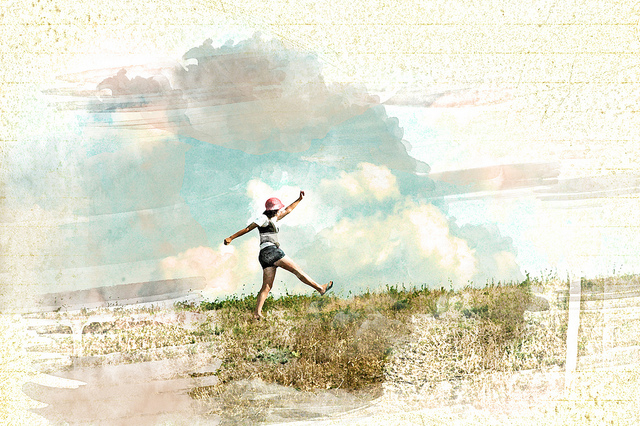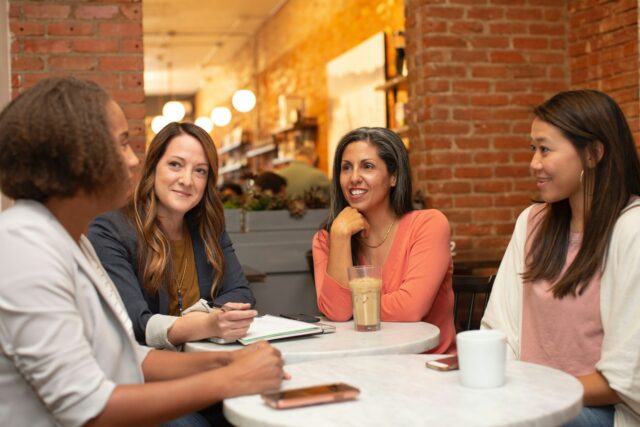Creativity and Mental Health
By: Jen McWaters, Psy.D. | October 13, 2017

Did you know that your creative efforts create psychological benefits?
Looking back on your childhood, you may have memories about the types of play you once enjoyed. Children use legos, dolls, sandcastles, art, imaginary friends, music, acting, building forts, and the like to explore their imagination and creativity. Whereas children easily immerse themselves for long periods in imaginative play, adults require concerted efforts to stay in playful, imaginative states of mind. The next time your child presents an opportunity to engage in imaginary play, take time to notice your internal experience. Is your attention pulled by your to-do lists, thoughts, or other worries?
The realities of daily life in adulthood easily pull us away from our creative selves. Many have stopped engaging in creative hobbies for lack of time for such things. The downtime in my own younger years was often spent reading fiction, writing, or drawing in my sketch pad. I spent hours upon hours exploring my imagination and engaging my creative side. Not only were these activities enjoyable and confidence-building, they also proved therapeutic. They constituted avenues for non-verbal expression and thought processing as well as providing comfort and self-soothing.
Sadly, my time spent on these activities greatly diminished with the realities of a busy adult life. I do, however, take full responsibility for not engaging more time on creative pursuits. Just like you, the pull of technology and TV wins the war over my downtime. This holds true for older children and teens today, with the allure of electronic devices stealing time from creative activities and beneficial psychological and emotional play.
It is time for us to reclaim our once beloved creative outlets. Practice your art, your music, your acting, your dancing or writing either by yourself or in therapy to facilitate authentic self-expression, stress-reduction, and enhanced emotional processing. What we cannot speak in words we can often write on paper, sing in a song, or enact through movement.
Rather than bottling up our thoughts and feelings, we can express them in a safe, contained way that yields improvement in our emotional well-being. The act of creating requires a mind-body connection that compels mindfulness of the present and of-the-moment experience.
Research shows that engaging in the arts leads to an array of physical and emotional benefits. For example, Davies, Knuiman, and Rosenberg’s 2016 study found that those in engaged in 100 hours or more per year in art-related pursuits reported significantly better mental health and well-being than those engaging less than 100 hours per year on those activities. Such activities included attending art events (e.g., recitals, plays, art shows, concerts, book readings, exhibitions) as well as participating in art activities (e.g., jewelry making, writing, music, photography, workshops, volunteering). Research also showed that engaging in the arts benefits our physical and cognitive well-being too, including illness or injury recovery (Stuckey & Nobel, 2008).
One hundred hours seems like a lot of time, but considering the range of activities the researchers included, there are a wide range of creative activities from which we each can benefit. You are probably doing many of these already! Here are additional ideas to get you started:
- If you have children or grandchildren, attend their school plays, recitals, concerts, and art shows.
- San Diego offers free or low-cost art festivals, concerts, street fairs, and performing arts events. For those living elsewhere, check your local or state for similar events near you.
- Consider picking up the affinity for a specific art you previously practiced. Maybe it’s learning to play a new instrument, doodling in your free moments, writing poetry, or signing up for a dance class. Many organizations offer free or low-cost classes and events.
- Try journaling, which is writing creative or impromptu thoughts in a blank book that you keep with you. Such thoughts can include writing down your daily experiences.
- As the holidays approach, engage your family in the arts, from attending a seasonal play to baking and decorating cookies at home. Doing arts and crafts with children puts the creative parts of your brain to work for your benefit.
Being proactive is required for creativity to play a beneficial role in your mental health. Here is your action step: Pick up a pencil or instrument today, and notice how you feel after spending some time writing, drawing, or playing. You never know, you might discover something surprisingly new about yourself.
References
Davies, C., Knuiman, M., & Rosenberg, M. (2016). The art of being mentally healthy: a study to quantify the relationship between recreational arts engagement and mental well-being in the general population. BMC Public Health, 16 (15). DOI: 10.1186/s12889-015-2672-7.
Stuckey, H. L. & Nobel, J. (2010). The Connection Between Art, Healing, and Public Health: A Review of Current Literature. American Journal of Public Health, 100(2), 254–263. Retrieved from http://doi.org/10.2105/AJPH.2008.156497.
Image: ClaraDon on flickr and reproduced under Creative Commons 2.0



